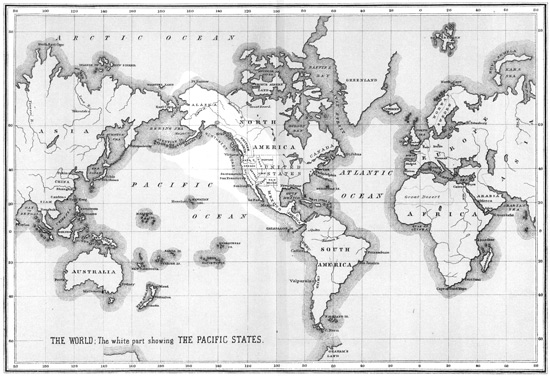Transcriber's Note:
Obvious typographical errors have been corrected.Inconsistent spelling and hyphenation in the originaldocument have been preserved.
Italics in the footnotes citations were inconsistently applied by the typesetter.
The following changes were made or suggested:
Page xlix: "Viena" is a possible typo for "Vienna"
Page xlix: "Megico" is a possible typo for "Mejico"
Page 18: The opening quote mark is missing in the quote ending "in company,"
Page 37: "Aläsku" should possibly be "Aläksu"
Page 104: "von 10 bis 12 Pud" should possibly be "von 10 bis 12 Pfund"
Page 105: "mit grellen Farben" should possibly be "die mit grellen Farben"
Page 203: Viaye changed to Viage
Page 210: "Some of women would with difficulty" is apparently missing a word
Page 212: Crane's Topog. Mem. possibly should be Cram's
Page 283: Farnham's Trav., pp. 81-; is missing an end page reference
Page 401: "galeon" should possibly be "galleon"
Page 413: Footnote 591 is missing its anchor
Page 417: Footnote 597 is missing its anchor
Page 420: Footnote 601 is missing its anchor
Page 468: "to the west fork of Walker's river the south.'" is apparently missing a word
Page 606: headquarters possibly should be headwaters
Page 699: gray colors possibly should be gay colors
Page 763: looses possibly should be loses
THE WORKS
OF
HUBERT HOWE BANCROFT.
VOLUME I.
THE NATIVE RACES.
Vol. I. WILD TRIBES.
SAN FRANCISCO:
A. L. BANCROFT & COMPANY, PUBLISHERS.
1883.
Entered according to Act of Congress in the Year 1882, by
HUBERT H. BANCROFT,
In the Office of the Librarian of Congress, at Washington.
All Rights Reserved.
PREFACE.
In pursuance of a general plan involving the productionof a series of works on the western half of NorthAmerica, I present this delineation of its aboriginal inhabitantsas the first. To the immense territory borderingon the western ocean from Alaska to Darien, and includingthe whole of Mexico and Central America, I givearbitrarily, for want of a better, the name Pacific States.Stretching almost from pole to equator, and embracingwithin its limits nearly one tenth of the earth's surface,this last Western Land offers to lovers of knowledge anew and enticing field; and, although hitherto its severalparts have been held somewhat asunder by the forceof circumstances, yet are its occupants drawn by natureinto nearness of relationship, and will be brought yetnearer by advancing civilization; the common oceanichighway on the one side, and the great mountain rampartson the other, both tending to this result. Thecharacteristics of this vast domain, material and social,are comparatively unknown and are essentially peculiar.To its exotic civilization all the so-called
